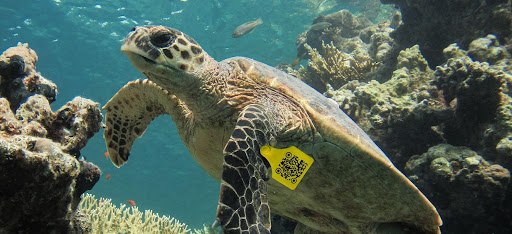QR code technology has dramatically helped conservationists track endangered species in the wild amid their dwindling numbers.
With geolocation features, conservationists and advocates can track the animals’ exact location and check whether they’re still living peacefully and interacting with other animals of their kind.
Advanced features of a QR code generator allow for a much simpler creation of a QR code for tags to place on the animal, making them recognizable when people spot them in the wild or astray in city centers.
The QR code technology is a much-needed upgrade to comprehensively conserve the population of endangered species and address their needs to further their reproduction in their natural habitats.
Here are a few examples of how conservationists can use QR code tracking to monitor endangered species.
Table of Contents
Apprehending poachers and illegal hunting
One of the most significant contributors to endangered animals is the unlawful activity of killing and hunting them for supposed aesthetic, medicinal, and culinary purposes.
Moreover, others may pursue endangered animals as a hobby, serving as trophies to display in their collections.
With geolocation, conservationists can follow the migration patterns of the animals and rid the area of poachers and hunters.
If ever the endangered animal is unfortunately killed, conservationists can track its last whereabouts and investigate the poaching activities in the area.
Conservationists can work with the government authorities to apprehend poachers and stop illegal hunting activities of endangered species.
Discovering more information about endangered species
With their few numbers, it can be challenging to learn more about endangered animals, especially if conservationists don’t know their location.
By placing a QR code on endangered animals, animal advocates and biologists can track the species’ whereabouts for more accurate observation and studies.
For example, biologists can study more about their mating practices, migration patterns, how they take care of their young, and whether they’re loyal to one partner for life.
Addressing these inquiries can help scientists devise a plan to increase their population, thus removing them from the endangered species list.
Taking care of their natural habitat
It’s no news that animals’ natural habitat worldwide is decreasing due to human activities, global warming, and the natural behavioral patterns of animals.
In a study by World Economic Forum in 2020, the Earth’s natural habitat can dwindle by 23% by 2100, further decreasing the places where animals can roam freely.
When conservationists find the habitat where endangered animals settle, it’s imperative to take care of them as much as possible.
With the QR code’s geolocation, scientists can advocate for governments to set up the habitat as a protected sanctuary or a national park to restrict harmful human activities, such as deforestation, mining, and more.
Endangered species can further thrive and freely reproduce with their habitats taken care of without fearing illegal activities and poaching.
Keeping track of the number of endangered animals
One of conservationists’ most crucial works is monitoring the growth or decline of endangered animals.
The geolocation feature of QR codes allows biologists to monitor the numbers of endangered animals from their natural habitat and when they leave in search of food or a better home.
Conservationists often lose track of the animals when they leave their homes, making it challenging to estimate their accurate numbers.
With a QR code for endangered animals, scientists can take advantage of the technology’s live updated feature, which shows the geolocation in real-time.
Take care of endangered species for future generations
Animals are fascinating beings that deserve a place to live on this Earth.
Take care of them today, so they can continue gracing their presence now and in future generations.
To boost animal conservation efforts, use a trusted QR code generator to enable geolocation features, customization, live database updating, dynamic QR code generation, and more.
Visit QRTIGER to learn more about the applications of QR codes to track endangered species.





